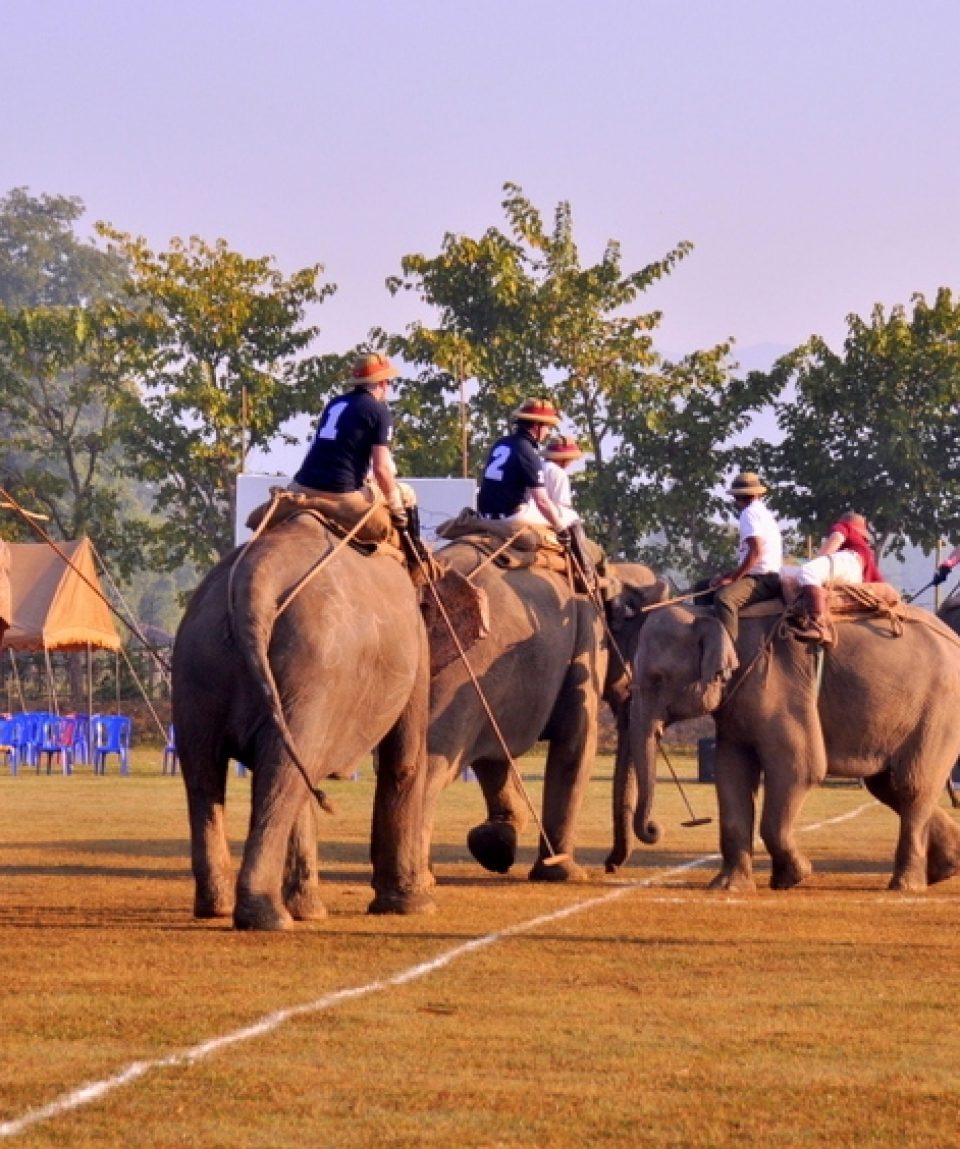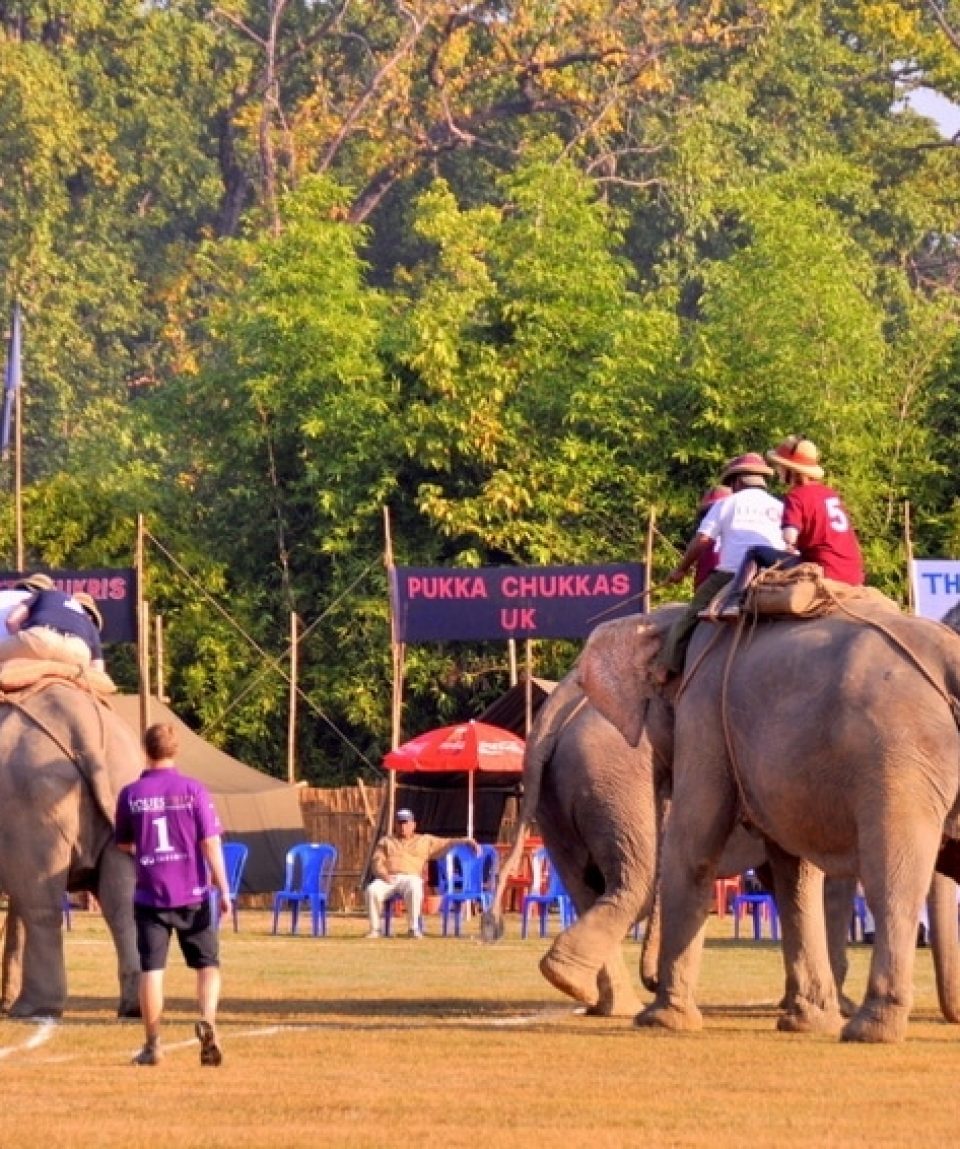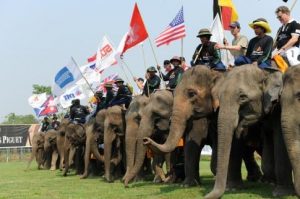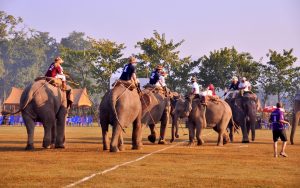Elephant Polo
Elephant polo was first introduced in Nepal in 1982 after James Manclark, a scion of horse polo, started the pachyderm version with fellow enthusiast Jim Edwards. The game is played by driving elephants using trainers called mahouts. Initially, a soccer ball was used in the game.
Elephant Polo in Nepal and Thailand is played under the auspices of the World Elephant Polo Association. WEPA enforces strict rules regarding elephant welfare and game play.
Today, elephant polo has been registered as an Olympic sport in Nepal and is internationally recognised as an official sport, which is also played in India, Sri Lanka and Thailand. The World Elephant Polo Association acts as an umbrella organisation for the championship in Nepal, where eight teams fiercely compete for five days in November.
-
Reviews 0 Reviews0/5
-
Vacation Style Holiday Type
-
Activity Level Moderate
-
Nepal is very popular in terms of adventure-related sports. Among other sports, Elephant Polo is one of the rare, adventurous and only of its kind in Nepal. This game was first played in India around the 20th century by the members of the Maharaja’s Harem (Zenana) to keep them busy. The idea of Elephant Polo in Nepal with the name of the co-founders, James Manclark, a Scottish landowner and Jim Edwards.
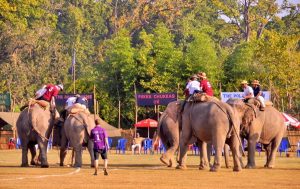
The first elephant polo games were played with a soccer ball. But after finding out that the elephants like to smash the balls, the soccer ball was replaced with a standard polo ball. The World Elephant Polo Association (WEPA) was established in 1982 with it headquarter at Tiger Tops Jungle Lodge in Chitwan, Nepal. The very first elephant was played on a grass airfield in Meghuauly, located just on the edge of the Chitwan National Park. Chitwan National Park has listed the World Heritage Site by UNESCO since 1984. It is a tropical jungle with the wild elephant, one horn rhino, and Royal Bengal tiger. This is an extremely funny tournament. If your interest, welcome to Nepal in December to enjoy it with wildlife safari. Explore an indigenous Tharu people with their culture and lifestyle.
Originally light footballs were used so as to make it easier to strike the ball with sticks of circa 100-120 inches in length (twice the length of horse polo) but that was quickly changed to normal polo balls as the elephants quite enjoyed popping the footballs! We now use a standard polo ball, which has made the sport more skilled and faster.
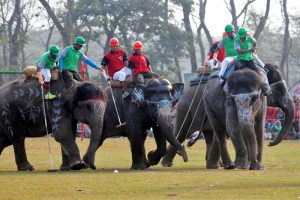
The rules have been amended on a yearly basis to make sure they are fair and to make sure the games flow smoothly.
No elephants may lie down in front of the goal mouth. To do so will constitute a foul. A free hit is awarded to the opposing side from the semi-circle in front of the goal.
- Teams are made up from the pool of elephants and balanced out as fairly as possible bearing in mind size and speed of the elephant. Once the pool of elephants has been selected, each elephant is categorized and marked as A,B,C,D, E and F.
- Any team with 3 elephants in one half of the pitch is judged to have committed a foul.
- An elephant may not pick up the ball in its trunk during play. To do so constitutes a foul and a free hit is awarded to the opposing team from the spot where the ball was picked up.
The defending players must be 15 meters from the spot.
- No more than 2 elephants may be in the D at one time – one from the attacking team and one from the defending team.
- There are no restrictions as to the height, weight or sex of the elephants.
- Sugar cane or rice balls packed with vitamins (molasses and rock salt) shall be given to the elephants at the end of each match and a cold beer, or soft drink, to the elephant drivers and not vice versa.
The health and welfare of the elephants used in elephant polo tournaments is of prime concern. Abuse of the elephant is considered to be the most serious offence.

